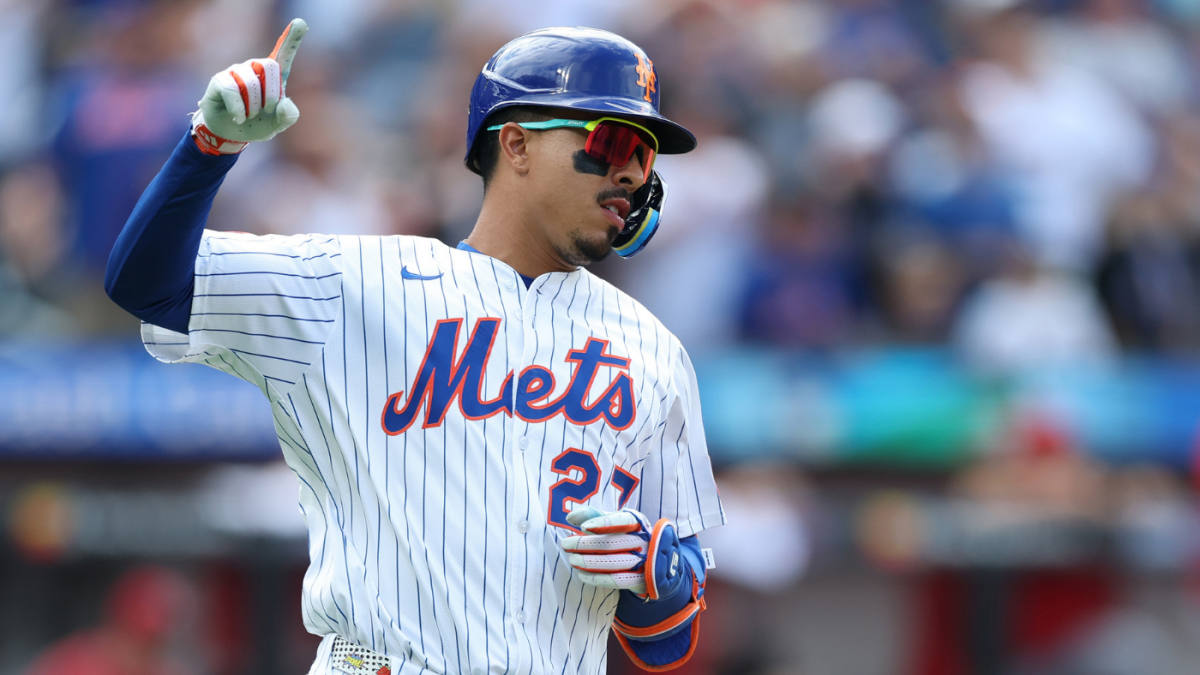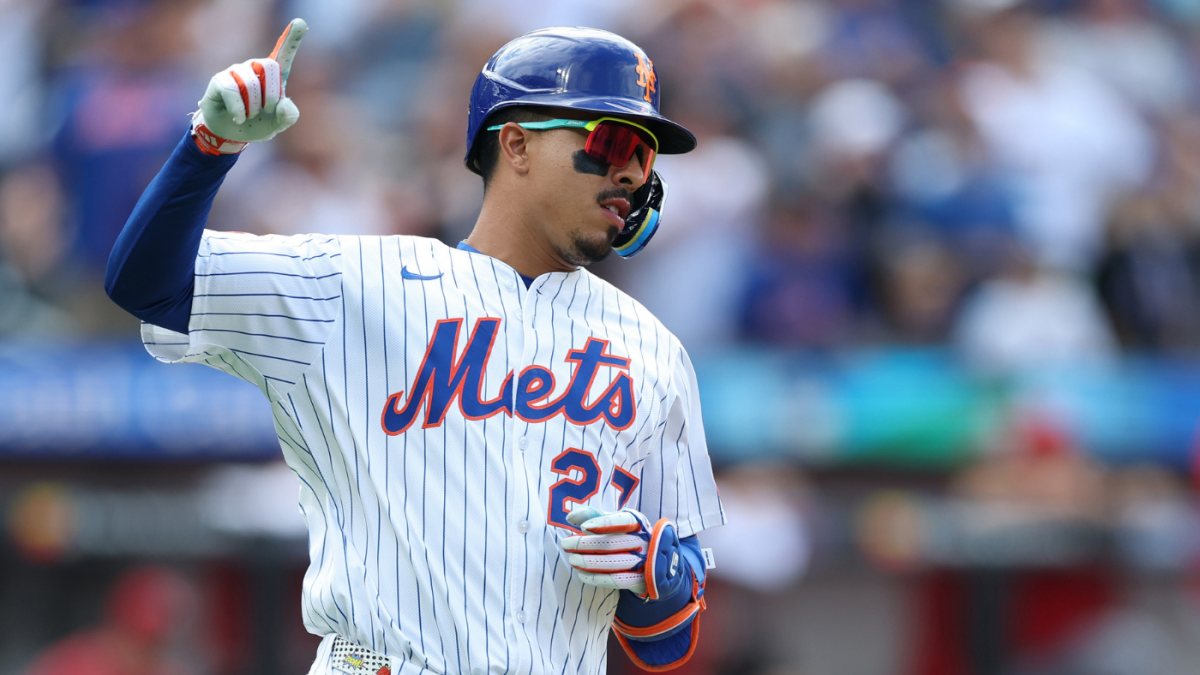The 2025 MLB Trade Deadline: A Strategic Crossroads
The 2025 MLB trade deadline is not just another date on the calendar; it’s a pivotal moment that can redefine the trajectory of franchises, alter playoff races, and set the stage for future success. As teams navigate the delicate balance between immediate contention and long-term sustainability, the decisions made in the weeks leading up to July 31st will echo through the league for years to come.
The Mets: A Tale of Two Strategies
The New York Mets find themselves at a familiar crossroads, a position that has become all too common in recent years. After a disappointing June, the team is facing mounting pressure to make impactful moves that could either propel them into playoff contention or signal a shift toward a rebuild. The Mets’ situation is a microcosm of the broader challenges teams face at the trade deadline: the tension between winning now and planning for the future.
Reports suggest the Mets are exploring both buying and selling options, a duality that underscores the uncertainty surrounding their direction. On one hand, the team could look to move established players like Luis Severino, a move that would signal a willingness to part with valuable assets in exchange for future talent. On the other hand, the Mets are also linked to Pirates starter Mitch Keller, a potential acquisition that would bolster their rotation and signal a commitment to contention.
The Mets’ bullpen is another area of focus, with reports suggesting they could reunite with veteran reliever David Robertson. Adding a reliable arm like Robertson would provide stability and experience to a Mets bullpen that has been inconsistent at times. However, the Mets could also opt for a more aggressive approach, making a “splurge” at the deadline to acquire multiple upgrades. This would signal a strong commitment to winning now, a strategy that could pay dividends if the team can string together a strong run in the second half of the season.
Ultimately, the Mets’ trade deadline strategy will hinge on their performance in the weeks leading up to July 31st. A strong showing could incentivize them to buy aggressively, while continued struggles could lead to a more measured approach focused on acquiring future assets. The Mets’ decision will not only impact their immediate playoff chances but also shape the direction of the franchise for years to come.
The Cubs: Building a Championship Contender
The Chicago Cubs, exceeding expectations this season, find themselves in a prime position to contend for a World Series title. However, to realize their championship aspirations, they must strategically upgrade their roster at the trade deadline. The Cubs’ situation is a testament to the power of smart acquisitions and the importance of timing in the pursuit of a championship.
One area of focus for the Cubs is third base, a position that has been a point of concern for the team. The Cubs are reportedly eyeing an upgrade at the hot corner, seeking to add offensive firepower and defensive stability to the position. This move would not only address a specific need but also signal a commitment to winning now, a strategy that could pay dividends in the postseason.
In addition to upgrading at third base, the Cubs are also expected to target a starting pitcher. While a true ace may be unavailable, the Cubs will likely target a No. 2 or No. 3 starter to bolster their rotation and provide depth for a potential playoff run. This move would not only address a specific need but also demonstrate the Cubs’ commitment to building a championship-caliber roster.
The Cubs may also explore trades to improve their lineup, seeking to add more power and consistency to their offense. This could involve targeting a corner outfielder or a designated hitter with a proven track record of driving in runs. Such a move would not only address a specific need but also signal a commitment to winning now, a strategy that could pay dividends in the postseason.
The Athletics: Embracing the Rebuild
In stark contrast to the Mets and Cubs, the Oakland Athletics are firmly in rebuilding mode. As such, they are expected to be active sellers at the trade deadline, offering up valuable players in exchange for prospects and future assets. The Athletics’ situation is a reminder of the importance of patience and long-term vision in the pursuit of sustained success.
The Athletics have several pitchers who could draw significant interest from contending teams, including righty Luis Severino and lefties JP Sears and Jeffrey Springs. These pitchers offer a mix of experience and potential, making them attractive targets for teams seeking to bolster their rotations or bullpens. By trading away established players, the Athletics aim to stockpile young talent and build a foundation for future success.
The Athletics’ approach is a testament to the power of strategic decision-making and the importance of prioritizing the future over immediate success. While the team may face criticism for trading away valuable players, the long-term benefits of such moves can ultimately lead to sustained competitiveness. The Athletics’ decision to embrace the rebuild is a reminder that success in baseball is not always measured in wins and losses but also in the ability to plan for the future.
Bubble Teams: A Defining Moment
Beyond the clear contenders and sellers, several “bubble teams” face critical decisions as the trade deadline approaches. These teams, hovering around .500, must determine whether to make a push for the playoffs or to concede the season and focus on rebuilding. The decision to buy or sell can have a profound impact on a team’s future, shaping their trajectory for years to come.
The performance of these bubble teams in the weeks leading up to the trade deadline will ultimately determine their approach. A strong showing could incentivize them to buy, while continued struggles could lead to a more pragmatic decision to sell. The choices made by these teams will not only impact their immediate playoff chances but also shape the direction of the franchise for years to come.
Key Players on the Move
Several high-profile players are expected to be on the move at the trade deadline, drawing interest from multiple contending teams. These players possess the talent and experience to significantly impact a team’s chances of reaching the playoffs and contending for a World Series title. The movement of these players can have a ripple effect throughout the league, altering playoff races and shaping the future of numerous franchises.
One of the most coveted players on the market is center fielder Luis Robert Jr. Robert Jr. is a dynamic player with exceptional power and speed, making him a valuable addition to any lineup. Several teams are expected to pursue Robert Jr., setting up a potentially fierce bidding war. The acquisition of a player like Robert Jr. can be a game-changer for a contending team, providing a spark that can propel them to the postseason.
In addition to Robert Jr., several starting pitchers could be on the move, including Jesús Luzardo of the Marlins, Garrett Crochet of the White Sox, and Erick Fedde of the White Sox. These pitchers offer a mix of talent and potential, making them attractive targets for teams seeking to bolster their rotations. The acquisition of a starting pitcher can be a critical move for a contending team, providing the depth and reliability needed to make a deep playoff run.
The Deadline’s Impact
The MLB trade deadline is more than just a date on the calendar; it’s a catalyst for change, a moment where the balance of power can shift dramatically. The moves made in the days leading up to July 31st can have a ripple effect throughout the league, impacting playoff races and shaping the future of numerous franchises.
Teams that make shrewd acquisitions can vault themselves into contention, while those that stand pat or make ill-advised trades risk falling behind. The trade deadline is a high-stakes game, where every decision is scrutinized and the consequences can be significant. The impact of the trade deadline extends beyond the immediate season, shaping the trajectory of franchises for years to come.
Conclusion: A Season Defined
As the 2025 MLB trade deadline approaches, the stage is set for a period of intense activity and strategic maneuvering. The decisions made by teams in the coming weeks will not only determine their fate this season but also shape their long-term trajectory. The trade deadline is a defining moment for several teams, a time of both opportunity and uncertainty.
For the Mets, the deadline represents a critical juncture, a moment to decide whether to chase immediate success or to prioritize building for the future. For the Cubs, it’s an opportunity to solidify their status as contenders and make a serious run at the World Series. And for the Athletics, it’s a chance to replenish their farm system and lay the foundation for future competitiveness.
The 2025 MLB trade deadline promises to be a defining moment for several teams, a time of both opportunity and uncertainty. As the clock ticks down to July 31st, all eyes will be on the transactions, the rumors, and the ultimate outcomes that will shape the landscape of Major League Baseball. The decisions made at the trade deadline will not only impact the immediate season but also shape the future of the league, making it a moment of both excitement and anticipation.












